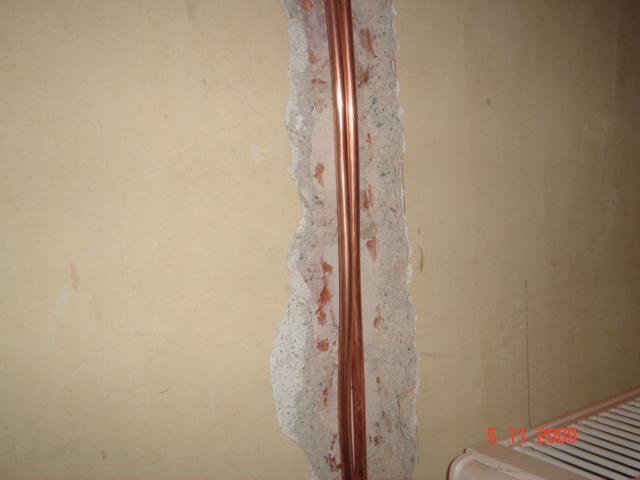Hello all,
What’s the best way of plastering over 8mm copper microbore central heating (radiator) pipes to avoid cracking due to heat expansion?
I have read lots and lots of post on this forum and there appears to be a few of choices.
Some people say just plaster over them.
Some people say wrap the pipes in duct tape and plaster over them.
Some people say wrap the pipes in denso tape and plaster over them.
Some people say run the pipes through flexible conduit and plaster over them.
I quite like the idea of running the pipes through flexible conduit as I can see that option definitely working. However the pipes are only 8mm and the narrowest flexible conduit I can find in the usual DIY shed (ie Wickes, B&Q, Screwfix and Toolstation) is 20mm in diameter which is way to too big for 8mm pipe and if used would result in there only being about a 1 mm coverage of plaster due to the depth of the chases (about 21mm). Any other ideas or suggestions of who sells thinner flexible conduit?
Thanks in advance.
What’s the best way of plastering over 8mm copper microbore central heating (radiator) pipes to avoid cracking due to heat expansion?
I have read lots and lots of post on this forum and there appears to be a few of choices.
Some people say just plaster over them.
Some people say wrap the pipes in duct tape and plaster over them.
Some people say wrap the pipes in denso tape and plaster over them.
Some people say run the pipes through flexible conduit and plaster over them.
I quite like the idea of running the pipes through flexible conduit as I can see that option definitely working. However the pipes are only 8mm and the narrowest flexible conduit I can find in the usual DIY shed (ie Wickes, B&Q, Screwfix and Toolstation) is 20mm in diameter which is way to too big for 8mm pipe and if used would result in there only being about a 1 mm coverage of plaster due to the depth of the chases (about 21mm). Any other ideas or suggestions of who sells thinner flexible conduit?
Thanks in advance.



